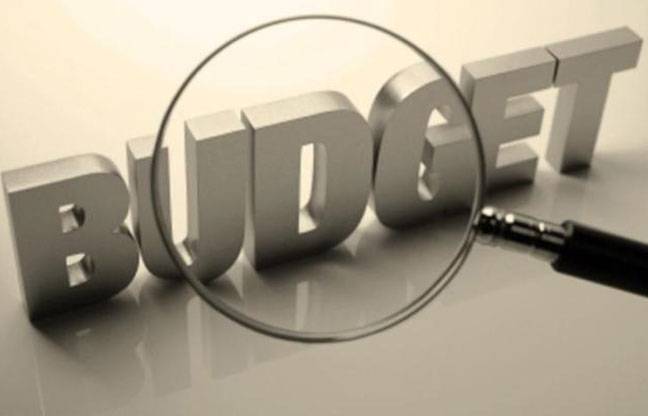ISLAMABAD - The government on Friday announced Rs920 billion as expenditures for the Defence and Services for new financial year 2017-2018 with an increase of Rs79 billion against Rs841 billion allocated last year.
The increase of Rs79 billion reflects Pakistan’s ongoing war against terrorism and to cope with the challenges to the national security, including the China Pakistan Economic Corridor (CPEC).
Although the government has allocated additional amount of Rs100 billion for the post Zarb-e-Azb operation’s stabilisation and rehabilitation in FATA, officers and soldiers of the armed forces will be paid ten per cent special allowance which is not part of the defence budget.
However, the proposed outlay of the order of Rs.920.166 also includes the expenses relating to the ongoing military operation Radd ul Fasaad.
According to details, Rs.917.949 billion has been proposed for the Defence Services and Rs2.217 billion for Defence Administration for year 2017-2018.
The proposed estimates of Rs920.166 billion also includes Rs322.142 billion for employees related expenses and Rs225.521 billion as operating expenses of the armed forces for the year 2017-2018.
Likewise, expenditures proposed for physical assets and civil works for the year 2017-2018 have also slightly increased as compared to the last year. Details relating to physical assets include proposed expenditures to the tune of Rs242.991 billion against Rs217.383 billion for the year 2016-2017.
While the expenditures proposed for the civil works include Rs128.346 billion for 2017-2018 as compared to Rs114.769 billion allocated for 2016-2017.
Details of the defence expenditures for 2017-2018 were discussed earlier this year when Finance Minister Ishaq Dar had a crucial meeting with Chief of Army Staff General Qamar Javed Bajwa. “The financial requirements of Pakistan Army were discussed during the meeting, in the context of the budget for next financial year 2017-2018. The ongoing development projects of Pakistan Army as well as the future development plans were discussed in detail,” said a handout issued by the Ministry of Finance to the media.
The finance minister said that the government would provide all possible resources to the armed forces to meet the national security and development needs.
It said that the government would enhance the defence budget as according to the requirement of the army including the finances needed for the recently launched “Operation Raddul Fasaad”.
The defence budget had recorded increase of 10-11 per cent over the last few years.
The government had earmarked Rs860.2 billion for defence budget for the ongoing financial year, 2016-2017, which was 11 per cent higher than the budget of Rs775.8 billion in the year 2015-2016.
The breakup of defence budget showed that Rs327 billion was fixed for employees-related expenses, Rs216.1 billion for operating expenses and Rs211.7 billion had been earmarked for physical assets.
However, the figures do not include Rs177.6 billion allocated for pensions of retired military personnel that are given from the civilian budget.
The government had released Rs336.3 billion for defence during first half (July-December) of the ongoing financial year, which is 39 per cent of the annual defence budget.
The defence budget does not encompass all national security expenses as it does not include the funds necessary to maintain the nuclear weapons programme or operations in FATA.
The Economic Survey 2016-17 released by the government on Thursday indicated a gradual decrease in direct and indirect losses to the country’s economy on account of terrorism since 2012 by slightly above 40 per cent to Rs407.21 billion in the first nine months of this fiscal year.
Analysts believed that in terms of budgeted procurements, there are several major programmes in progress: The Pakistan Air Force (PAF)’s JF-17 Thunder, which is gradually becoming the new mainstay fighter of the PAF fighter fleet; the Pakistan Navy may begin implementing its next generation submarine programme; the Pakistan Army will begin to gear up for the induction of its new attack helicopters.
There are obviously many other acquisition programmes at play as well, but these are likely the big-ticket items in the pipeline for the short and medium term. A core issue for the country’s defence strategists is to manage expenditures, particularly towards expensive imports.
Greater dependence on the domestic industry will enable the Pakistani military to take advantage of local labour and material costs, thereby saving it (and the country) money. This will be a key objective for the Ministry of Defence Production, which is aiming to indigenise and domestically source as much of the armed forces’ armament needs as possible.






